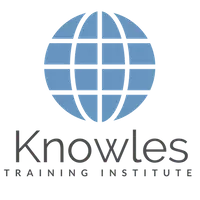It takes a specific set of abilities to be a successful trainer. The comfort in front of learners, knowledge of the subject matter, experience, and passion for training builds interest. I’d say these are the least pre-requisites. Anyone in a Training and Development role should have these qualities. But while pleasing to have, none of these guarantees excellent results.
Despite what field they are in or what they are teaching, the most outstanding trainers I’ve met share these six features:
- Method before content.
How you say, something is often more influential than the content of the information. The process of conversation is all about the nuance of offering and packaging. Words, tones, gestures, attitudes, and facial expressions all play a role in defining how readily a person will correlate with the message. Consider these two steps of starting a coaching event;
“I have a lot of valuable knowledge to share with you today created to benefit your efficiency.”
“I am exhilarated to see each of you today and look forward to getting to understand you and your unique activity at work.”
Which one engaged you? Each one correlates with a different subset of your audience in crucial ways that affect their engagement, Learning, remembrance, and motivation to implement what they are learning. We all know that personal differences impact how people like to be interacted with, what they value, and how they discover best. Great trainers adapt their delivery accordingly.
We require our certified teachers to obtain feedback from their associates, including this question, “Did the teacher connect with me?” Our Analysis shows this is one of the most potent predictors of consequences and engagement.
How well do you relate to the people you are teaching? How do you understand?
- Being productive is more important than being correct.
What do you do when your associates are doubtful or don’t appreciate the significance of what you are sharing? Battling about who’s best is pure folly. It doesn’t involve what you know. It matters how your cooperators experience it. Consider these two comments:
“Here’s what you need to understand to be more efficient.”
Vs.
“I am enthusiastic about these strategies and embrace your opinions on their purpose in your life.”
The first one exposes the need to be right, and the second reveals the wish to be effective. The first suggests defensiveness. The second encourages engagement.
Great trainers keep effectiveness over justification.
Is it necessary for you to be appropriate or effective?
- Want others to learn and grow without assuming them to.
It has been the most challenging way for me to adopt. I get paid to give results. I’m passionate about the importance of the material. So it’s easy for me to anticipate my students engage, learn, and avail. And as they say, expectations are the surest path to disappointment. Great trainers distinguish the training outcomes from their own and their learners’ self-worth. They do their best, deliver their all, and let go of the rest.
- Self-aware and self-managed.
The best instructors are intimately in touch with their thoughts ( ideas, plans, schedule, goals), their souls (emotions, physiological responses, comfort level, boundaries), and their activities (behaviors, motivations, impact on others).
They are continually evaluating and balancing these three for supreme effectiveness. They know their bodies, control their stress, take care of themselves, and stay out of discomfort while training. They are knowledgeable about how their behaviors affect others and how their opinions and beliefs come through in their performance. They know their triggers, hot buttons, and fields of weakness and have strategies to counter effectively.
- Be a coping model.
Did you know students feel less confident around an expert who does it well all the time? That makes you unrelatable and intimidating, and your job isn’t to be a specialist. Your task is to facilitate Learning. Excellent trainers role-model are known for coping rather than perfection. They are willing to admit errors, distribute vulnerabilities, and self-correct.
- Compassionate liability.
Compassion without accountability takes you nowhere. Responsibility without compassion gets you distanced. The best trainers balance the two by encouraging environments of safety, interest, and consistency. They know that the most beneficial outcomes occur when people are clear about their hopes, concerns, and motives, resourceful in productive problem solving, and determined to follow through with the challenging work of training and application.











